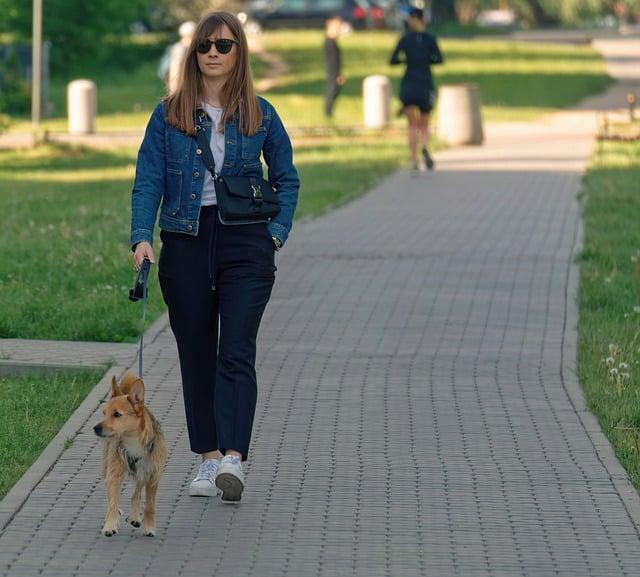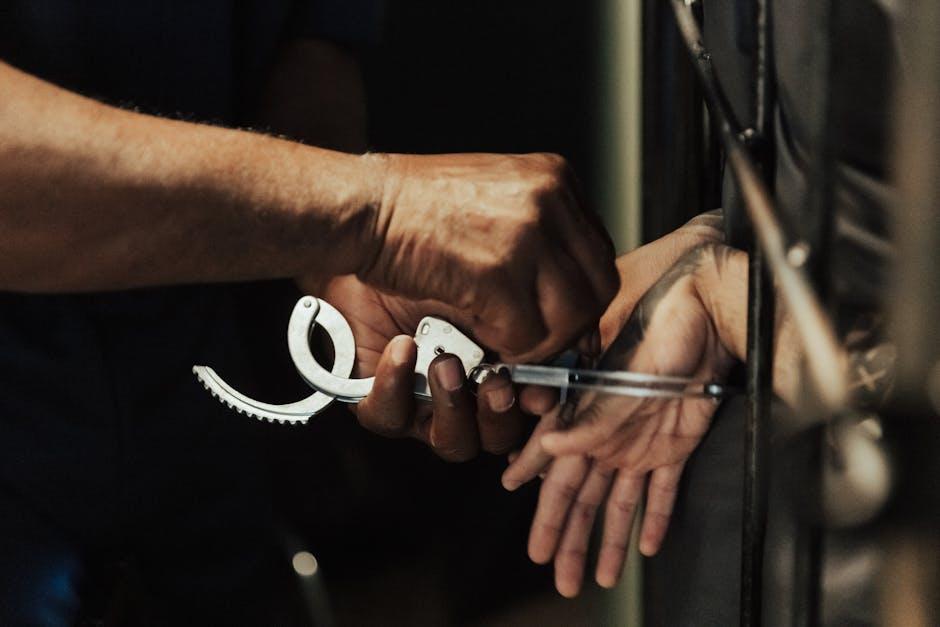Imagine coming home after a long day, only to find your beloved dog happily playing with their favorite toys, tail wagging and eyes sparkling. This scene isn’t just a dream; it can be your reality! Dogs can indeed be left alone with toys, provided they are safe and appropriate for their size and chewing habits. Engaging toys stimulate their minds and keep them entertained, reducing anxiety and destructive behavior. So, invest in quality toys and give your furry friend the freedom to play while you’re away—it’s a win-win for both of you!
Contents
- Understanding the Safety of Leaving Dogs Alone with Toys
- Evaluating the Types of Toys Suitable for Solo Play
- Recognizing Behavioral Signs of Stress or Boredom in Dogs
- Implementing Strategies for Safe and Engaging Playtime Alone
- Q&A
Understanding the Safety of Leaving Dogs Alone with Toys
When considering whether to leave your dog alone with toys, it’s essential to evaluate the types of toys you provide. **Durability** is a key factor; toys made from robust materials are less likely to break apart, reducing the risk of choking hazards. Opt for toys that are specifically designed for your dog’s size and chewing habits. For instance, a small dog may easily manage a toy meant for larger breeds, which could lead to accidental ingestion of parts.
Another important aspect is the **safety features** of the toys. Look for items that are non-toxic and free from harmful chemicals. Many reputable brands offer toys that have been tested for safety, ensuring that they won’t pose health risks if chewed or ingested. Additionally, consider toys without small parts that could be easily detached, as these can become choking hazards. Always inspect toys regularly for wear and tear, discarding any that show signs of damage.
Engagement is also a crucial consideration. Toys that stimulate your dog’s mind can help alleviate boredom and reduce anxiety when left alone. **Interactive toys**, such as puzzle feeders or treat-dispensing balls, can keep your dog occupied and mentally engaged, making it less likely for them to resort to destructive behaviors. Providing a variety of toys can also cater to different play styles, ensuring that your dog remains entertained during your absence.
Lastly, it’s vital to understand your dog’s individual temperament and behavior. Some dogs may be more prone to destructive chewing or anxiety when left alone. **Monitoring your dog’s reactions** to different toys can help you determine what works best for them. If your dog tends to destroy toys quickly or shows signs of distress when left alone, it may be wise to limit their access to certain types of toys or consider alternative solutions, such as crate training or supervised playtime.
Evaluating the Types of Toys Suitable for Solo Play
When considering toys for dogs that will be left alone, it’s essential to focus on those that promote engagement and mental stimulation. **Interactive toys** are a fantastic choice, as they often require the dog to solve a puzzle or manipulate the toy to access treats. This not only keeps them occupied but also encourages problem-solving skills, making the time spent alone more enriching. Look for toys that can be filled with treats or kibble, as they can provide hours of entertainment.
Another category to consider is **durable chew toys**. Dogs have a natural instinct to chew, and providing them with sturdy toys can satisfy this urge while also keeping them safe. Opt for toys made from high-quality materials that can withstand vigorous chewing. These toys not only help maintain dental health by reducing plaque and tartar buildup but also serve as a comforting outlet for anxiety, making them ideal for solo play.
**Toys that promote physical activity** are also crucial for dogs left alone for extended periods. Look for options like balls or frisbees that can be used for solo play. Some toys are designed to roll or bounce unpredictably, encouraging dogs to chase and engage with them actively. This type of play can help burn off excess energy, reducing the likelihood of destructive behavior when left alone.
consider **soft toys** that can provide comfort. Many dogs enjoy cuddling with plush toys, which can help alleviate feelings of loneliness when their owners are away. Choose soft toys that are machine washable and free from small parts that could pose a choking hazard. By offering a variety of toys that cater to different play styles, you can ensure that your dog remains entertained and happy, even in your absence.
Recognizing Behavioral Signs of Stress or Boredom in Dogs
Understanding your dog’s emotional state is crucial, especially when considering leaving them alone with toys. Dogs, like humans, can exhibit signs of stress or boredom, which can lead to destructive behaviors or anxiety. By recognizing these behavioral cues, you can ensure your furry friend remains happy and engaged, even in your absence.
Common indicators of stress in dogs include:
- Excessive barking or whining: If your dog is vocalizing more than usual, it may be a sign of distress.
- Pacing or restlessness: A dog that can’t settle down may be feeling anxious.
- Destructive behavior: Chewing furniture or digging can indicate that your dog is bored or stressed.
- Changes in appetite: A sudden loss of interest in food can signal emotional turmoil.
On the other hand, boredom can manifest in different ways. Dogs left alone for extended periods without stimulation may resort to behaviors that are not only harmful to your belongings but also detrimental to their well-being. Signs of boredom include:
- Repetitive behaviors: Such as spinning in circles or excessive licking.
- Seeking attention: If your dog is constantly trying to engage you, it may be a sign they need more mental stimulation.
- Increased energy levels: A bored dog may exhibit hyperactivity when you return home.
To mitigate these issues, it’s essential to provide a variety of engaging toys that can stimulate your dog mentally and physically. Interactive toys, puzzle feeders, and chew toys can keep your dog occupied and reduce the likelihood of stress or boredom. Additionally, consider rotating toys regularly to maintain your dog’s interest and encourage exploration. By being proactive and attentive to your dog’s needs, you can create a more harmonious environment for both of you, ensuring that your dog feels secure and entertained while you are away.
Implementing Strategies for Safe and Engaging Playtime Alone
When considering leaving your dog alone with toys, it’s essential to choose the right types of toys that promote safe and engaging play. **Durability** is key; opt for toys made from high-quality materials that can withstand your dog’s chewing and playing habits. Look for options that are specifically designed for your dog’s size and breed to minimize the risk of choking hazards. **Interactive toys** that dispense treats or require problem-solving can keep your dog mentally stimulated, reducing anxiety and boredom during your absence.
Another important factor is the **supervision** aspect. Before leaving your dog alone, observe how they interact with their toys. This will help you identify any potential risks or behaviors that may lead to accidents. If your dog tends to destroy toys quickly, it may be wise to remove those items before leaving them alone. **Rotating toys** can also be beneficial; by introducing new toys periodically, you can maintain your dog’s interest and excitement, making playtime more engaging.
Creating a **safe play environment** is crucial. Ensure that the area where your dog will be playing is free from hazards such as small objects, electrical cords, or anything else they could chew on or swallow. Consider using a designated play area, such as a dog-proofed room or a crate, where they can enjoy their toys without the risk of getting into trouble. **Comfort items**, like a favorite blanket or a piece of your clothing, can also provide emotional support and help your dog feel secure while they play alone.
Lastly, **monitoring your dog’s behavior** after playtime is essential for their well-being. Pay attention to any signs of distress or changes in behavior when you return. This can help you gauge whether your dog is comfortable being left alone with toys. If you notice any negative reactions, it may be time to reassess the types of toys you provide or the duration of alone time. By taking these proactive steps, you can ensure that your dog enjoys safe and fulfilling playtime, even in your absence.
Q&A
-
Can dogs be safely left alone with toys?
Yes, most dogs can be safely left alone with toys. However, it is crucial to choose toys that are appropriate for your dog’s size and chewing habits to prevent choking hazards or ingestion of small parts.
-
What types of toys are best for leaving with dogs?
Opt for durable, non-toxic toys that are designed for solo play. Consider options such as:
- Rubber chew toys
- Interactive puzzle toys
- Stuffed toys without small parts
-
How long can dogs be left alone with toys?
The duration depends on the individual dog. Generally, dogs can be left alone for a few hours with toys, but it’s essential to gradually increase the time to ensure they are comfortable and not anxious.
-
What should I do if my dog shows destructive behavior with toys?
If your dog exhibits destructive behavior, reassess the toys provided. Ensure they are suitable for your dog’s chewing style and consider providing more engaging toys or rotating them to maintain interest.
while toys can provide entertainment and mental stimulation for dogs left alone, it’s crucial to choose safe, durable options and monitor their behavior. With the right precautions, you can ensure your furry friend enjoys their time solo without worry.

大家好,我是彼得潘,專業的手法身體治療師。我喜歡探索和研究各種主題,並透過與人工智慧的合作分享專業、實用、有趣的文章。我們定期進行人工審核,以確保內容的準確性。如果您發現文章中有任何不準確的地方,請隨時與我們聯繫,我們會及時糾正。您可以透過 [email protected] 與我們聯繫。



